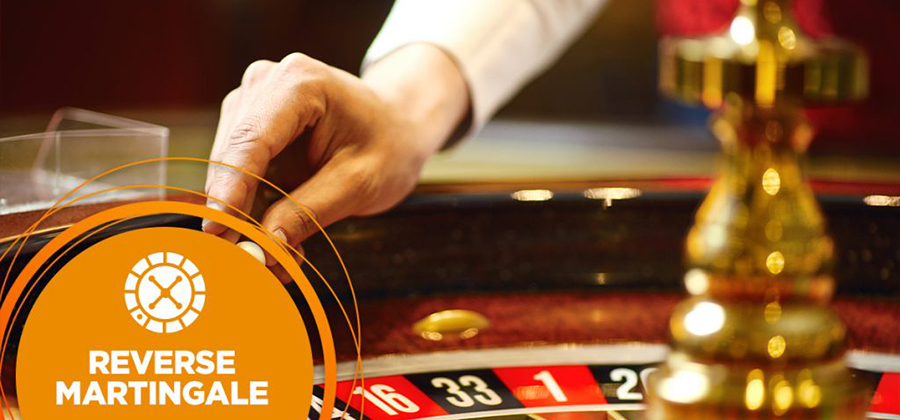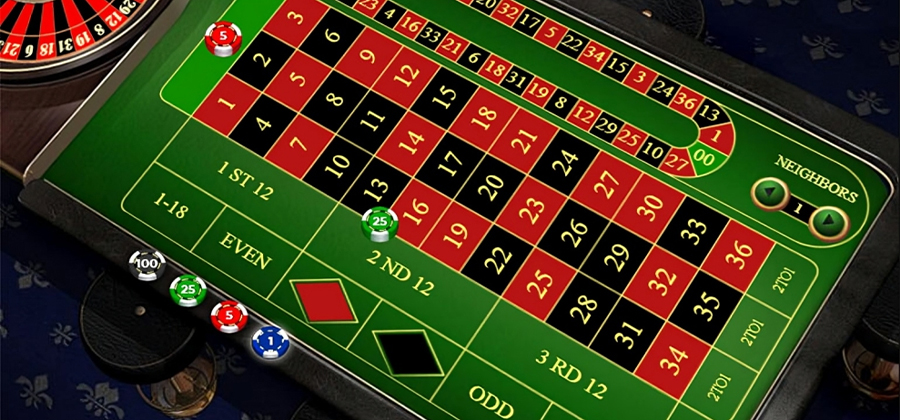In the dynamic world of casino betting, the Reverse Martingale Roulette Strategy emerges as a beacon of hope for those looking to capitalise on winning streaks with a methodical approach. This strategy, an inventive twist on the traditional Martingale betting system, advocates for doubling bets after each win, thereby leveraging the power of momentum to potentially amplify gains. Unlike its predecessor, which increases stakes after losses, the Reverse Martingale is designed with the aim ofmaximisingg winnings during a favourable run while also instituting a safeguard against the swift drain of funds. By starting with a base bet and escalating the wager with each victory, players embark on a calculated journey, aiming to stretch the wings of fortune while maintaining a tight rein on their bankroll. This article serves as a comprehensive guide, dissecting the mechanics, advantages, and risks of the Reverse Martingale Strategy, alongside offering insights into optimal betting practices and bankroll management. Furthermore, for those intrigued by the realm of strategic betting, we’ll explore alternative strategies, providing a well-rounded understanding of how to navigate the roulette table with confidence and insight. Whether you’re an experienced player or new to the roulette wheel’s allure, mastering the Reverse Martingale Strategy could significantly enhance your gaming experience.
Table of Contents
What is the Reverse Martingale Roulette Strategy?
The Reverse Martingale Roulette Strategy is a progressive betting system designed specifically for roulette, emphasising the principle of doubling the bet after each win. Unlike its counterpart, the traditional Martingale Strategy, which advocates for increasing bets after losses, the Reverse Martingale takes a different approach. It starts with a player selecting a base bet, such as $10, and upon securing a win, the subsequent wager is elevated to $20. With each additional victory, the bet continues to double, potentially leading to significant gains during a streak of wins. In the event of a loss, however, the anti-martingale strategy still dictates a reset to the initial base bet, thereby mitigating the risk of quickly depleting the player’s bankroll. This strategy capitalises on the momentum of winning streaks, transforming the roulette game’s volatility into a structured opportunity for profit, all while maintaining a disciplined approach to betting.
Why use the Reverse Martingale Strategy?
The allure of the Reverse Martingale Strategy lies in its strategic approach to capitalise on winning streaks, making it a powerful tool for players aiming to maximise their winnings. By doubling bets after each win, this method not only leverages the momentum of success but also significantly amplifies potential gains during a long run of good luck. This strategy shines in its capacity to control and minimise overall losses. Implementing a reset to the base bet after experiencing a loss acts as a safeguard, preventing the swift drain of a player’s bankroll—a common risk with strategies that escalate bets following losses.
In essence, the Reverse Martingale system offers a balanced approach, striking an optimal balance between aggressively pursuing profits during favourable conditions and exercising caution to shield against substantial financial setbacks. This dual focus makes it an attractive strategy for players who are keen on effectively managing their funds while chasing the possibility of significant rewards.
To capitalise on winning streaks
The Reverse Martingale Strategy excels during periods of consecutive wins. By doubling the bet after each victory, players can significantly amplify their potential winnings. This approach leverages the momentum of success, transforming a sequence of favourable outcomes into a lucrative opportunity. It’s precisely engineered for those instances when fortune favours the player, converting modest wins into substantial rewards.
To control and minimise overall losses
On the flip side, this strategy incorporates mechanisms to minimise risk of loss effectively. Resetting the wager to the original base amount after experiencing a loss prevents the swift erosion of the player’s bankroll. This crucial feature of the Reverse Martingale Strategy acts as a safeguard, ensuring that a single setback doesn’t wipe out all previous gains. It promotes a methodical betting discipline, where potential losses are kept in check, empowering players to extend their playtime and steer clear of the common trap of loss chasing.

How does the Reverse Martingale Strategy work?
The Reverse Martingale Strategy unfolds through a simple yet potent principle: double your bet after each win. Initially, a player selects a base bet, for example, $10. Following a win, this wager is increased to $20. Should luck persist and another win ensues, the bet then doubles to $40. This pattern of bet wins and incrementally doubling the wager with each victory leverages the momentum of a winning streak, potentially leading to significant gains.
However, this strategy also introduces a vital safety net: resetting to the initial bet after a loss. In the event of a loss at any point, the next bet reverts to the base amount, such as $10. This mechanism is designed not only to maximise earnings during a run of wins but also to protect the player’s bankroll by mitigating losses. It ensures that a single loss does not erase all accumulated winnings, offering a balanced approach to both capitalising on success and safeguarding against setbacks.
Doubling bets after each win
At the heart of the Reverse Martingale Strategy lies the principle of doubling the bet after each win. This tactic leverages the momentum of consecutive wins, enabling players to exponentially increase their winnings.
Starting with a base bet, e.g., $10
The strategy kicks off with a base bet, for instance, $10. This initial stake forms the cornerstone of the betting sequence, marking the beginning of a potential winning or losing streak each.
If you win, the next bet is $20; if you win again, the next is $40
Upon securing a win, the strategy stipulates that starting amount of the subsequent wager should be doubled to $20. A continued streak of luck, resulting in another win, prompts the bet to double once more to $40. This pattern of progressive doubling is maintained as long as wins are consecutively achieved.
Resetting to the initial bet after a loss
Incorporating a critical safeguard, the strategy mandates resetting to the initial bet after a loss. This precaution ensures that losses are contained and do not significantly impact the player’s bankroll.
If a loss occurs at any stage, revert to base bet
Should a loss be encountered at any juncture in the betting sequence, the strategy advises a reversion to the base bet. This conservative measure is designed to protect the player’s accumulated winnings and manage overall risk effectively.
Risks of the Reverse Martingale Strategy
While the allure of playing the Reverse Martingale Strategy is undeniable, it comes with inherent risks that players must carefully consider. One of the most significant concerns is the quick depletion of winnings after a loss. Given that the strategy relies on doubling bets after each win, a single loss has the potential to erase all previously accumulated winnings, posing a substantial risk to the player’s bankroll.
Moreover, the effective implementation of this strategy necessitates a large bankroll. The requirement for a considerable financial reserve to sustain multiple rounds of bet doubling can be daunting and may not be practical for all players. This aspect underscores the strategy’s high-stakes nature, where the potential for significant financial loss looms large.
In essence, while the Reverse Martingale Strategy can offer thrilling opportunities to maximise winnings, it also demands a cautious approach due to the risks of rapid winnings depletion and the need for a substantial bankroll to navigate through the ups and downs of the game.
Quick depletion of winnings after a loss
The Reverse Martingale Strategy carries the risk of the quick depletion of winnings after a loss. This approach, which can be highly rewarding during a sequence of wins, has the potential to swiftly negate all gains with a single setback due to its reliance on doubling bets post-victory.
A single loss can eliminate all accumulated winnings
This fragility means that a single loss holds the power to wipe out all accumulated winnings, positioning the strategy as a high-risk venture. Players are advised to proceed with caution, recognising the volatile nature of their potential financial standing.
Large bankroll requirement
Furthermore, the strategy necessitates a large bankroll for effective application. The need to sustain multiple rounds of bet doubling calls for a considerable financial reserve, making the strategy less accessible to players without the capacity to support such games within a betting framework.
To sustain multiple rounds of bet doubling
This prerequisite highlights the importance of a substantial financial base, as maintaining the ability to sustain multiple rounds of bet doubling is essential formaximisingg the benefits of the Reverse Martingale Strategy while managing its intrinsic risks.
Best bets for the Reverse Martingale Strategy
The effectiveness of the Reverse Martingale Strategy is significantly enhanced when applied to even-money bets such as red/black, odd/even, or 1-18/19-36. These options present a nearly 50% chance of winning each round, aligning perfectly with the strategy’s objectives. The high win probability of these bets dovetails with the strategy’s aim tocapitalisee on winning streaks while also serving to mitigate the risk associated with rapid loss.
By concentrating on these bets, players are better positioned to manage their bankrolls efficiently and extend their gaming sessions. This focus allows players to leverage the strategic advantages of the Reverse Martingale betting system, optimising their chances for sustained success at the roulette table.
Even-money bets: red/black, odd/even, 1-18/19-36
Opting for even-money bets such as red/black, odd/even, or 1-18/19-36 is a tactical choice within the Reverse Martingale Strategy framework. These betting options stand out for their straightforward nature and the equitable odds they present, serving as a foundational element for this betting strategy.
Offers a near 50% chance of winning each round
The key advantage of these even-money bets is their near 50% winning probability each round. This significant chance of success is perfectly in sync with the strategy’s goal of leveraging winning streaks to the fullest while also safeguarding against rapid losses, thus enhancing the player’s opportunity for sustained achievement.
Bankroll management with the Reverse Martingale
Mastering bankroll management is pivotal when utilising the Reverse Martingale Strategy. This process is anchored in the establishment of clear win and loss limits, which serve as a guardrail for securing profits and averting significant financial setbacks. Implementing a win limit empowers players to safeguard their earnings before the temptation of further gains results in potential losses. Conversely, setting a loss limit acts as a precaution, preventing players from exhausting their bankroll in a solitary gaming session. Such meticulous financial oversight is indispensable for leveraging the advantages of the Reverse Martingale, allowing players to relish the fruits of their strategic endeavours while mitigating the inherent risks of high-stakes gambling.
Setting a win limit
Incorporating a win limit within the Reverse Martingale Strategy is a calculated approach to secure profits and circumvent the temptation of chasing higher wins, which can lead to losses driven by greed. This limit acts as a financial safeguard, compelling players to pocket their winnings at the right moment.
To lock in profits and prevent greed-driven losses
Establishing this boundary enables players to make prudent decisions, effectively insulating their earnings from the inherent risks of continued betting.
Setting a loss limit
Similarly, the adoption of a loss limit is crucial to preserve the bankroll from being exhausted in a single gambling session. This preventive measure ensures a balanced approach to betting, fostering sustainable play across sessions.
To avoid depleting the bankroll in a single session
By delineating a clear cutoff for losses, players can navigate the ups and downs of gambling without jeopardising their entire bankroll, thus endorsing a responsible and more enjoyable betting journey.
Alternatives to the Reverse Martingale Strategy
For enthusiasts exploring different avenues in roulette betting, several alternatives to the Reverse Martingale Strategy stand out, each with its unique approach to risk and reward. The Martingale Strategy is one such alternative, predicated on the concept of doubling bets after each loss. This method aims to recuperate previous losses with a win, presenting a high-risk, high-reward scenario.
Another strategy worth considering is the D’Alembert Strategy, which adopts a more conservative stance. It involves increasing bets by one unit after a loss and decreasing them by one unit after a win, striving for a steady accumulation or decrement of funds.
Lastly, the Fibonacci Strategy offers a different perspective, utilising a sequence where each bet is the sum of the two preceding ones, applied specifically after losses. This approach seeks to recover lost bets over time, offering a methodical path to regaining balance.
Each of these strategies provides a distinct way to navigate the complexities of roulette betting, catering to various preferences in risk management and bankroll utilisation.
The Martingale Strategy
The Martingale Strategy stands as a classic approach in the betting world, emphasising the tactic of doubling bets after each loss. This strategy is designed with the ambition to quickly recover any previous losses through a single win, presenting a bold, high-risk, high-reward scenario for the daring player.
The D’Alembert Strategy
Alternatively, the D’Alembert Strategy takes a more tempered route. It advocates for increasing bets by one unit after a loss, and in the spirit of balance, decreasing bets by one unit after a win. This strategy aims for a steady financial ebb and flow, promoting a methodical approach to betting.
The Fibonacci Strategy
The Fibonacci Strategy, named after the famous sequence, introduces a thoughtful betting pattern where each bet is the sum of the last two bets, activated following a loss. This strategic approach seeks to systematically recover lost bets over time, offering a disciplined framework for managing betting sequences.



 by
by 


